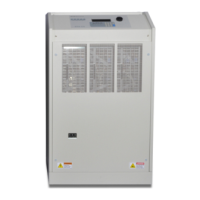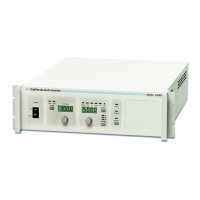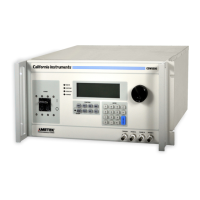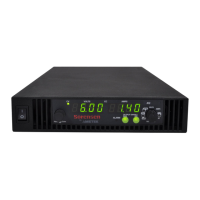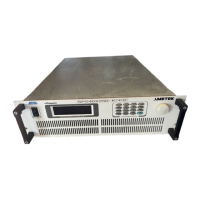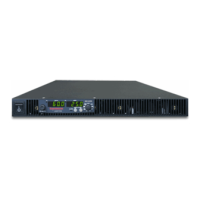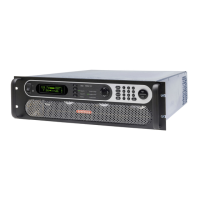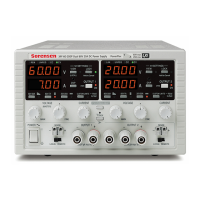User Manual AMETEK Programmable Power
RS Series 217
9.11 Option –SNK: Current Sink
9.11.1 General
This section describes the SNK option available for the RS Series Power Source.
9.11.2 General Description
The –SNK or current sink option enables the RS power source to sink current from the unit
under test. This mode of operation is particularly useful when testing grid-tied products that feed
energy back onto the grid. The ability of the RS to simulate the grid provides unique
opportunities to test the EUT for immunity to commonly occurring line anomalies like voltage
and/or frequency fluctuations. Typical examples of these types of EUT’s are solar and/or wind
power inverters.
The SNK option requires special amplifiers that have a different control loop from the standard
RS amplifiers. This different control loop ensures greater stability under regenerative load
conditions. Due to this modified characteristic however, the upper frequency limit of an RS
configured with the –SNK option is reduced to 500Hz from the standard 819Hz.
RS units without the SNK will generate an error message if more than 20% of available power
(per phase) is regenerated by the load. It will shut off if the negative power reaches 30% of
available power.
Regenerative Mode of operation The RS will automatically operate in regenerative mode when
the Regenerative state is enabled and the measured power is negative, indicating energy is
being fed back into the RS amplifiers. In this mode of operation, the current limit mode will
behave differently than it does under normal load conditions.
When the absolute value of the current exceeds the regenerative programmable current limit set
point (current limit is set in the REGENERATE CONTROL screen), the output voltage of the RS
will be increased gradually in an attempt to reduce the amount of current being fed back. Note
that there is no other way for the RS to limit the current as the current is not generated by the RS
itself but rather by the load (inverter). Consequently, normal current limit operation does not
apply in this mode of operation. The voltage will continue to be raised until the user set over
voltage trip point is reached. This trip level can be set in the REGENERATE CONTROL screen
located under the APPLICATIONS SETUP 2 screen. At this point, and after the delay set by the
“DELAY F” parameter is reached, the AC frequency will be shifted by the amount set in the
dFREQ parameter field. Most inverters will shut down when detecting a sudden change in
frequency. If the frequency shift (dFREQ) is set to zero however, the output voltage will be
dropped to the under voltage limit setting (UNDER VOLT) set in the REGENERATE CONTROL
screen instead of the frequency shift. At this point, the EUT should shut down due to an under
voltage condition. Finally, the output replay is opened after the user set delay expires and the
current still exceed the current limit set in the REGENERATE CONTROL screen.
